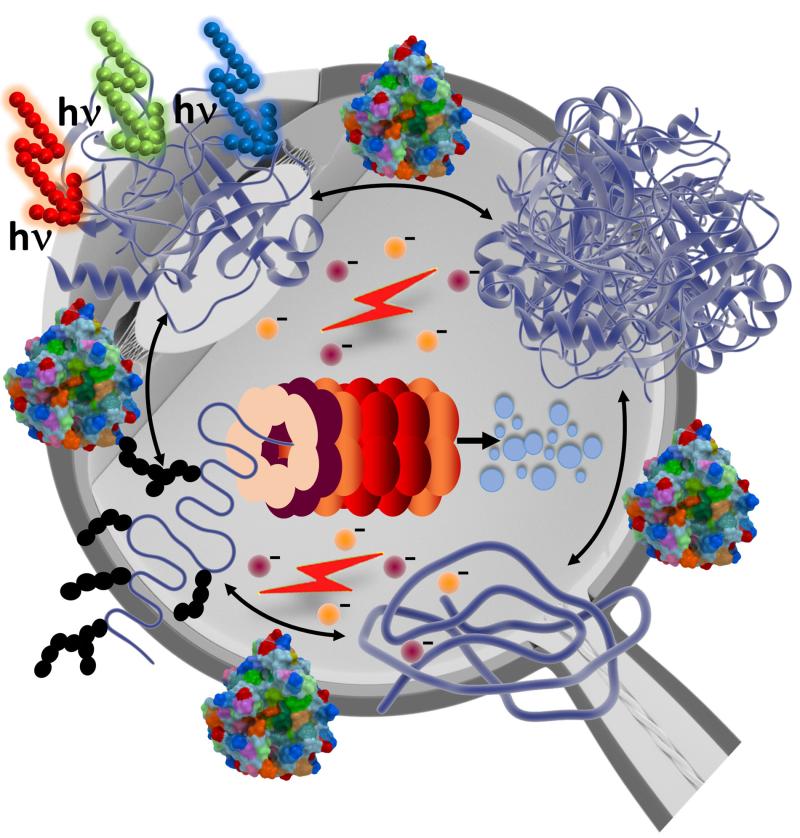Fitness
Researchers discover a new mechanism to enhance the fitness of neurons against aging and neurodegenerative disease.

Researchers discover a new mechanism to enhance the fitness of neurons against aging and neurodegenerative disease.
A research study by scientists at Duke University Medical Center (Durham, NC; USA) uncovered activities of a target, called Ranbp2 that remodel the expression of chaperones in neuronal tissues prone to photo-damage and accelerated aging. The work of researchers led by Dr. Paulo Ferreira at Duke indicates that the remodeling of a network of chaperones by Ranbp2 preordains the protection of certain cells and tissues against noxious stressors, which compromise neuronal function and survival.
Chaperones belong to a family of diverse proteins, which play essential but complementary roles in maintaining the homeostasis of proteins in cells. Chaperones prevent the malfunctioning, damage, clumping, and deposits of proteins by associating with substrates and by promoting their stability. Chaperones also facilitate the proper degradation (turnover) of proteins. Impairment of protein homeostasis that causes protein deposits is a hallmark feature of neurodegenerative diseases, such as age-related macular degeneration (AMD), Alzheimer’s, amyotrophic lateral sclerosis (ALS), Parkinson’s, and other diseases.
Notably, aging also subdues the induction of chaperones. This outcome is thought to compromise cellular fitness and how cells cope against a wide spectrum of environmental stressors.
The researchers at Duke found that loss of a foldase activity linked to Ranbp2 induces the robust up-regulation of a subset of chaperones, called Crystallins. In addition, they found that the induction of Crystallins leads to a decline of proteins targeted for degradation with aging. Crystallins are conspicuously soluble, and they provide lifelong transparency and structural stability to the lens of the eye, where they predominate. Photodamage of the lens Crystallins leads to cataracts and vision impairment with aging.
The study found that basal levels of expression of Crystallins are found in other tissues, such as those lining the back of the eye – the retina and the retinal pigment epithelium (RPE). These tissues are critical for the initiation and processing of vision before visual signals are transmitted to the brain. These tissues are also highly prone to photodamage with aging. The confluence of these factors with genetic predispositions is associated with AMD disease, a prevalent neurodegenerative and blindness disease of the elderly.
The current findings uncover novel approaches for targeting therapeutically selective activities of Ranbp2 to enable the induction of critical chaperones and to promote cellular fitness. The research work indicates that the chaperones, Crystallins, will enhance the protection of the retina and RPE from damage, and improper degradation and clumping of proteins triggered by photo-oxidative stressors. These effects of Crystallins’ induction are anticipated to prevent or to delay the onset and progression of malfunction and degeneration of these tissues, and thereby preserve vision.
Source Information/Journal Reference: Patil, H. et al. Proteostatic Remodeling of Small Heat Shock Chaperones ─ Crystallins by Ran-Binding Protein 2 ─ and the Peptidyl-Prolyl cis-trans Isomerase and Chaperone Activities of Its Cyclophilin Domain. ACS Chem Neurosci (2024) [Epub ahead of print]; https://doi.org/10.1021/acschemneuro.3c00792 – published online 24 April 2024.
Duke University Medical Center
DUEC 3802
2351 Erwin Road
Durham, NC 27710
USA
Duke University School of Medicine is one of the nation’s leading institutions for health professions and biomedical education, clinical care, biomedical research, and community partnership.
This release was published on openPR.










